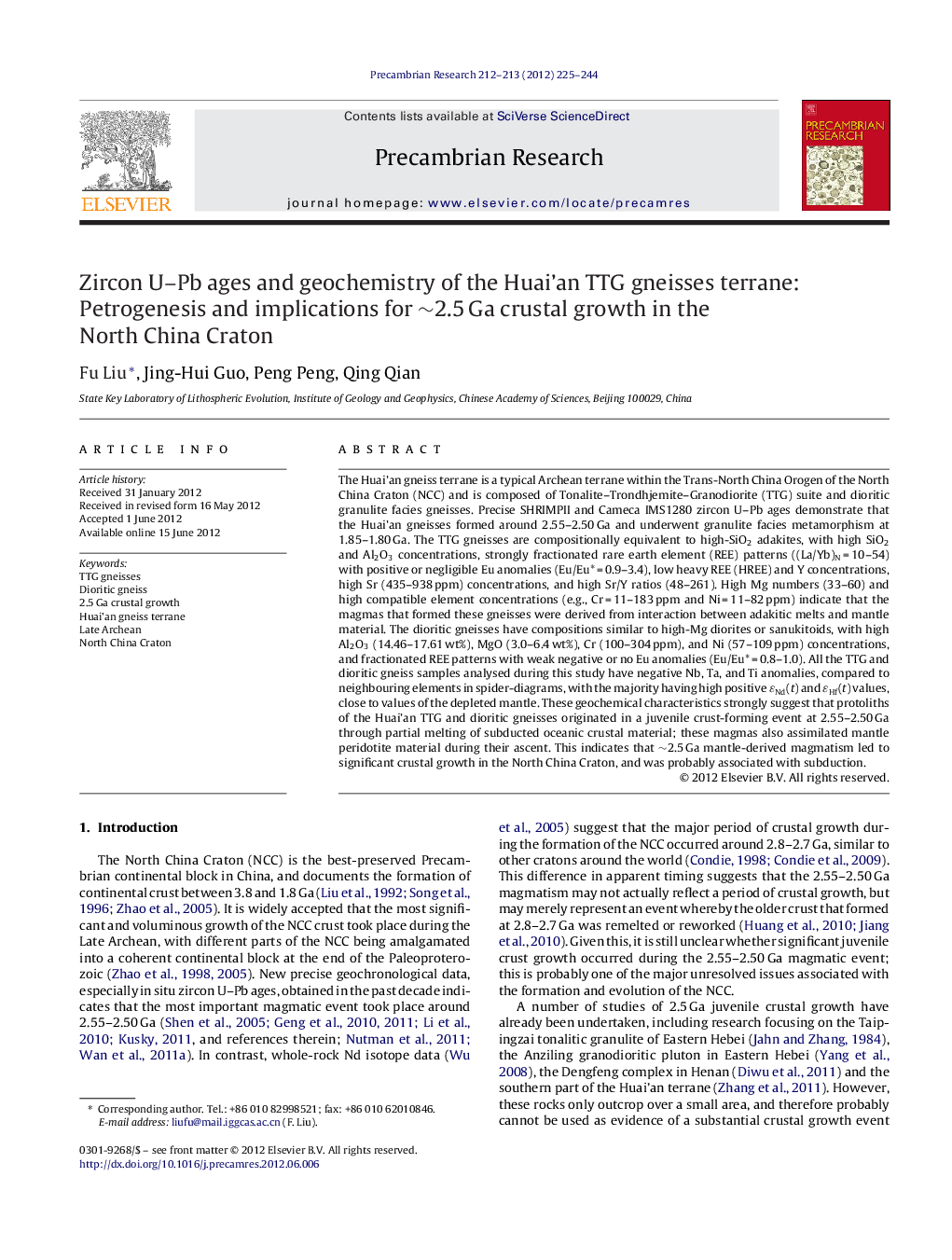| Article ID | Journal | Published Year | Pages | File Type |
|---|---|---|---|---|
| 4723543 | Precambrian Research | 2012 | 20 Pages |
The Huai’an gneiss terrane is a typical Archean terrane within the Trans-North China Orogen of the North China Craton (NCC) and is composed of Tonalite–Trondhjemite–Granodiorite (TTG) suite and dioritic granulite facies gneisses. Precise SHRIMPII and Cameca IMS1280 zircon U–Pb ages demonstrate that the Huai’an gneisses formed around 2.55–2.50 Ga and underwent granulite facies metamorphism at 1.85–1.80 Ga. The TTG gneisses are compositionally equivalent to high-SiO2 adakites, with high SiO2 and Al2O3 concentrations, strongly fractionated rare earth element (REE) patterns ((La/Yb)N = 10–54) with positive or negligible Eu anomalies (Eu/Eu* = 0.9–3.4), low heavy REE (HREE) and Y concentrations, high Sr (435–938 ppm) concentrations, and high Sr/Y ratios (48–261). High Mg numbers (33–60) and high compatible element concentrations (e.g., Cr = 11–183 ppm and Ni = 11–82 ppm) indicate that the magmas that formed these gneisses were derived from interaction between adakitic melts and mantle material. The dioritic gneisses have compositions similar to high-Mg diorites or sanukitoids, with high Al2O3 (14.46–17.61 wt%), MgO (3.0–6.4 wt%), Cr (100–304 ppm), and Ni (57–109 ppm) concentrations, and fractionated REE patterns with weak negative or no Eu anomalies (Eu/Eu* = 0.8–1.0). All the TTG and dioritic gneiss samples analysed during this study have negative Nb, Ta, and Ti anomalies, compared to neighbouring elements in spider-diagrams, with the majority having high positive ɛNd(t) and ɛHf(t) values, close to values of the depleted mantle. These geochemical characteristics strongly suggest that protoliths of the Huai’an TTG and dioritic gneisses originated in a juvenile crust-forming event at 2.55–2.50 Ga through partial melting of subducted oceanic crustal material; these magmas also assimilated mantle peridotite material during their ascent. This indicates that ∼2.5 Ga mantle-derived magmatism led to significant crustal growth in the North China Craton, and was probably associated with subduction.
► TTG and dioritic gneisses of the Huai’an gneiss terrane were generated between 2.55 Ga and 2.50 Ga and experienced granulite-facies metamorphism at ∼1.85 Ga. ► The Huai’an gneiss terrane represents ∼2.5 Ga juvenile continental crust of the NCC. ► TTG and dioritic gneisses were derived from partial melting of subducted oceanic crust and interaction with mantle peridiotite.
